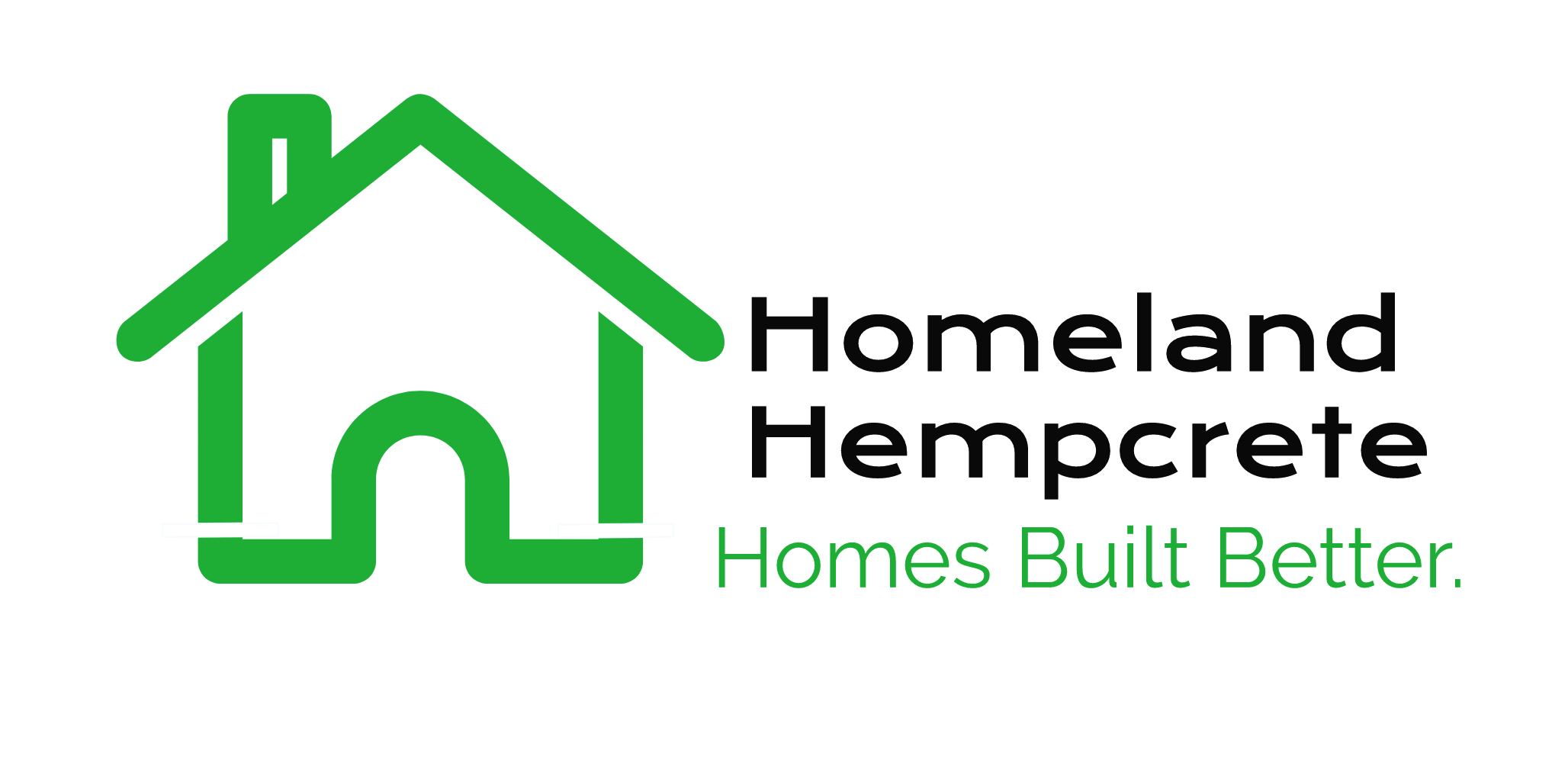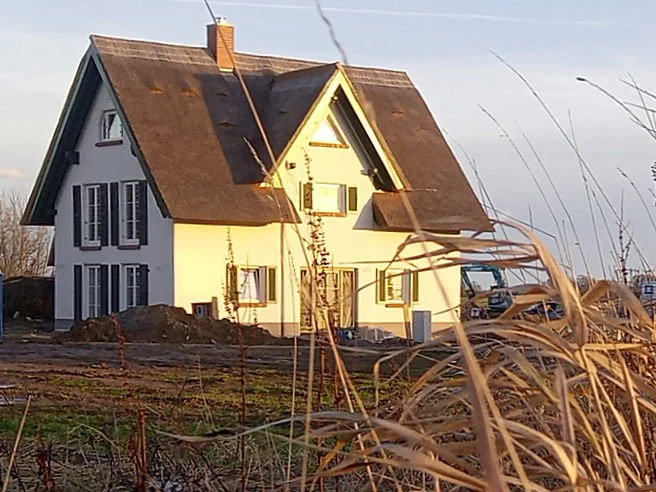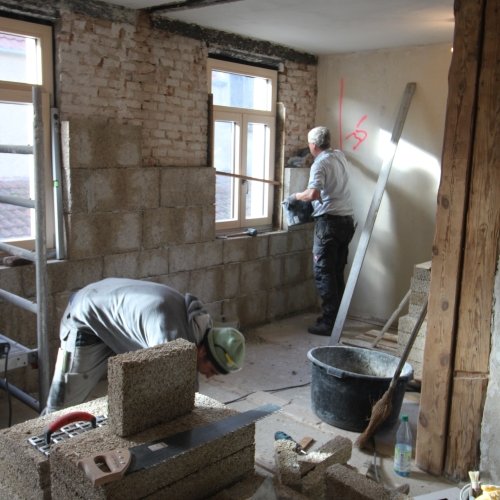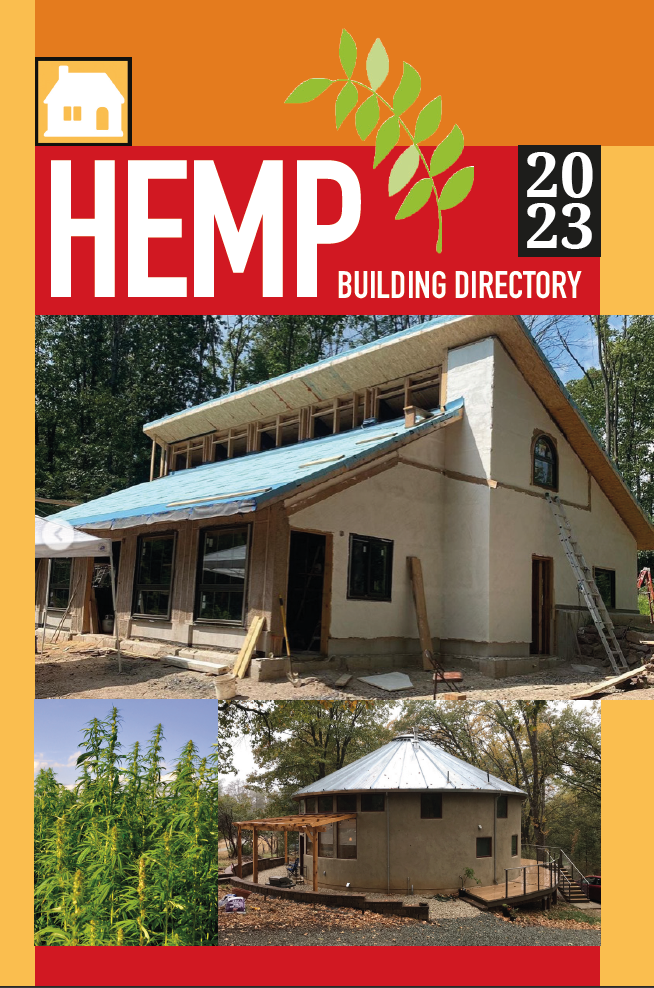Profile: Henrik Pauly, head of Germany's Hanfingenieur
German hemp builder Henrik Pauly founder of Hanfingenieur poses in front of one of his projects. Photo courtesy of Henrik Pauly .
By Genevieve Lotus
HAMBURG, GERMANY: Meet Henrik Pauly, head of the Hanfingenieur team: one of the only hemp-building teams in Germany.
Since 2020, the Hanfingeneur team has been sourcing hemp, planning and designing hemp-specific architecture, even casting the hemp concrete themselves. The company has completed projects of every size and scale, and in many locations in Germany, as well as offering seminars on the uses of hemp as a sustainable building material.
Henrik helped to start a hemp building collective in 2018 with other hemp builders, now connected with the Nutzhampfnetzwerk. They work to bring together growers, conveyors, processors, and consumers of industrial hemp, as well as build consciousness of the economic and environmental benefits. When the project started, using hemp was not well known at all.
“We have learned every step of the way,” Pauly told HempBuild Mag.
When Pauly sought to build an engineering company specializing in hemp, he realized: “The infrastructure was just not there. The challenge was we had to build up everything at the same time. If we want to build these houses, we need to learn to do every step of the process on our own.”
Instead of finding separate firms who specialized in planning, sourcing, and constructing with hemp, they had to organize all of it from the ground up.
“There was demand from owners who wanted to build with hemp, but no framework to do so,” he said.
Among Germany’s natural resources there are many natural building materials, but are all formatted for the timber construction sector. This natural construction sector only makes up 20% of the building sector, the 80% left is buildings made of concrete and brick.
But Pauly believes neither of these methods take advantage of the potential of natural building materials in Germany. And timber, as well as concrete and brick construction, ismore ecologically damaging and less sustainable.
Pauly said he sees immense potential in hemp as a building material.
“It is the perfect solution to the climate friendly building sector.”
Hempcrete holiday home on the island of Rügen in northern Germany. Photo courtesy of Hanfingenieur
Learned about hemp in school
Pauly grew up in southern Germany, and first heard about Hemp at 11 years old, when a farmer came to give a presentation on the crop to his class in school. His grandmother had been buying clothes from a shop called Hampfhaus Reutlingen. The shop has sold hemp-based clothing and other goods since 1995 in southern Germany. The owners are committed to popularizing the use of hemp in clothing, as well as climate justice and sustainable, eco-friendly products.
Pauly visited the Hampfhaus after his introduction in school, and the owner gave an overview of the many uses of hemp as a material. Since then he has been passionate about the potentiality of the plant.
“I caught this fire for this plant and it has been burning since then,” he told HempBuild Mag.
Renovations and modernizations are also a huge part of the construction industry in Germany and also face similar challenges: Many old buildings that need updates are often renovated with concrete, even if they were originally formatted with timber construction.
Pauly sees an opportunity for hemp-lime in Germany’s renovation market.
“Hemp as a building material can be a solution for every single problem that arises with other building methods,” he said. Hemp materials are more sustainable, have a smaller carbon footprint, are naturally sourced and are sturdier than timber construction.
Hemp has been used in Germany for thousands of years. Early hemp seeds and fibers from hemp clothing from more than 7,000 years ago were found in the Thuringia region. But in modern times, hemp growing and use was not legalized until 2003 in Germany.
Germany’s population has been steadily growing and city planning in the major cities reflects the new, rising demand for housing.
In Hamburg, where the Hanfingeneiur team recently helped to build a hemp home with blocks, the city housing associations have set goals for 10,000 new constructions a year, 30% of which should be socially subsidized. Germany has also been a global leader in uncompromising ecological standards, especially in the energy sector. Hemp enthusiasts like Pauly and his Hanfingenuer team see a green future of sustainable housing and climate friendly building in a country that needs it.
The Hanfingenieur team renovates a historic farmhouse with hempcrete blocks. Photo courtesy of Hanfingenieur
Please Support Our Classified Advertisers
(To find out more about advertising CLICK HERE).
Help Wanted:
Publications
Hemp Building Directory 2023 - Guide to the International Hemp Building Industry
“Hemp Buildings - 50 International Case Studies” by Steve Allin
Hemp Building Research and Training
Enrolling now Hemp Build School Masterminds online and IRL for Homeowners and Professionals
Hemp Hurd (shivs)/Hemp Fiber/ Hemp Microfiber
Hemp Building Company: Hempcrete Supplies, Training Programs. Longmont, CO
PROducing Sustainable Fibers for Environmentally Conscious Consumers - Prairie PROducers
Hempcrete installers/Insulation subcontractors
Hempknowlogy: Home of the Hempjet: America’s first hempcrete spraying system. Manchaca, TX
Design and build your Hempcrete home with HempStone LLC complete consultants
Lime Binder
Hemp Batt Insulation/Supplies
Hemp Wall Panel Products
Preorder your hempcrete tiny house from Sativa Building Systems
Panel solutions from Homeland Hempcrete
Hemp Blocks
Professional Associations




























